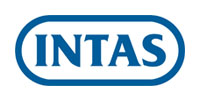Massage and Health
Massage therapy is the systematized manipulation of soft tissues for the purpose of normalizing them. Practitioners use a variety of physical methods including applying fixed or movable pressure, holding, or causing movement to the body. Therapists primarily use their hands, but may also use their forearms, elbows, or feet. The basic goal of massage therapy is to help the body heal itself and to increase health and well-being.
Massage and Health
Massage is a holistic therapy. It has an effect on both body and mind.
Massage increases the circulation of blood and flow of lymph. The direct mechanical effect of rhythmically applied manual pressure and movement used in massage can dramatically increase the rate of blood flow. Also, the stimulation of nerve receptors causes the blood vessels (by reflex action) to dilate, which also facilitates blood flow. This has a profound effect on one's health.
The following are the key effects of massage:
Reduced muscle tension.
Massage affects the muscles throughout the body. Massage affects the muscles and other soft tissues throughout the body. It loosens contracted, shortened, hardened muscles. Massage can stimulate weak, flaccid muscles. Chronic muscle tension reduces the circulation of the blood and movement of lymph in an area.
Improved blood circulation.
The oxygen capacity of the blood can increase 10-15% after massage. By indirectly or directly stimulating nerves that supply internal organs, blood vessels of these organs dilate and allow greater blood supply to them.
Better lymph movement.
Lymph is a milky white fluid that drains impurities and wastes away from the tissue cells. A component of these wastes is toxins which are the by-products of metabolism. So, it is vital to our health. The muscular contraction has a pumping effect that moves lymph. Massage and exercise help to move lymph.
Increased mobility and range of motion of joints.
Massage provides a gentle stretching action to both the muscles and connective tissues that surround and support the muscles and many other parts of the body, which helps keep these tissues elastic.
Stimulated or soothed nervous system.
Massage balances the nervous system by soothing or stimulating it, depending on which effect is needed by the individual at the time of the massage.
Enhanced skin condition.
Massage enhances the skin condition by improving the function of the sebaceous and sweat glands, which keep the skin lubricated, clean, and cool.
Better digestion and intestinal function.
Massage increases the body's secretions and excretions. It increases the production of gastric juices, saliva, and urine. There is also increased excretion of nitrogen, inorganic phosphorus, and salt. As a result, the metabolic rate increases.
Relief of acute and chronic pain.
Massage can promote recovery from fatigue and from minor aches and pains
Beneficial effects on the internal organs and the immune system
Reduced swelling
Reduced stress
General relaxation
Overall improvement in physical health and the quality of life.













